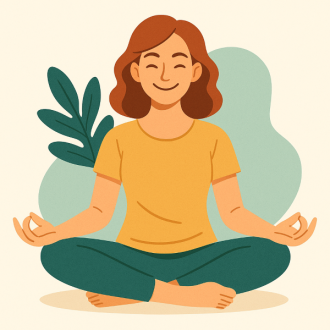Anxiety is not just a mental state—it is deeply rooted in the body. People with anxiety often report physical symptoms such as a racing heart, muscle tension, shallow breathing, or a sense of restlessness. These bodily experiences are not secondary—they are central to how anxiety is felt and expressed. Body Psychotherapy offers a unique therapeutic approach by directly addressing both the physical and emotional dimensions of anxiety.
Understanding Anxiety as a Mind-Body Experience
Anxiety involves a complex interaction between the nervous system, emotions, and cognition. While traditional therapies focus on thoughts and behaviors, Body Psychotherapy recognizes that the body also carries and reflects states of fear, tension, and overwhelm.
People with anxiety may commonly experience:
- Tightness in the chest or throat
- Shallow or rapid breathing
- Muscle stiffness
- Digestive disturbances
- Hypervigilance or physical restlessness
- Difficulty relaxing or feeling grounded
These somatic symptoms often persist even when cognitive awareness of anxiety is high—highlighting the need for therapeutic work that includes the body.
What Is Body Psychotherapy
Body Psychotherapy is a holistic approach that combines verbal dialogue with somatic (body-centered) techniques. It draws on neuroscience, trauma-informed care, and somatic psychology. Therapists guide individuals to become aware of and safely explore physical sensations, movement patterns, and held tensions that are associated with anxiety.
Rather than simply analyzing the cause of anxiety, this therapy invites clients to listen to their body's messages, regain internal regulation, and process emotions physically as well as mentally.
How Body Psychotherapy Supports Treatment of Anxiety
1. Regulation of the Autonomic Nervous System
Anxiety often stems from chronic dysregulation of the nervous system (e.g., sympathetic overactivation). Grounding techniques, breathwork, and gentle movement help shift the body toward a calmer parasympathetic state.
2. Building Body Awareness
Clients learn to notice early signs of anxiety in the body—tight jaw, clenched fists, racing breath—before they escalate. This increased awareness supports early intervention and self-regulation.
3. Discharging Held Tension
Long-standing anxiety may lead to muscular holding patterns. Somatic practices help release this tension, allowing the body to return to a more neutral, balanced baseline.
4. Interrupting the Fear Loop
Anxious thoughts often fuel physical symptoms, and vice versa. Body-oriented techniques interrupt this loop by grounding the person in the present moment and creating new pathways for safety and calm.
5. Reclaiming Internal Safety
Many individuals with chronic anxiety do not feel safe in their own bodies. Body Psychotherapy restores the sense of internal safety by supporting mindful connection with the body in a non-threatening way.
Common Techniques Used
- Grounding and centering exercises
- Breath awareness and breath regulation
- Movement exploration (e.g., walking, swaying, stretching)
- Body scanning and somatic dialogue
- Touch therapy (if appropriate and consented)
- Visualization techniques linked to body states
- Voice and sound expression to release internal pressure
Sessions are tailored to the individual's pace and comfort level, ensuring that the therapeutic process remains safe and supportive.
Integrating Body Psychotherapy with Other Treatments
Body Psychotherapy can be integrated with:
- Cognitive-behavioral therapy (CBT) to combine cognitive and somatic strategies
- Medication, where applicable, to reduce physiological arousal and enhance engagement in therapy
- Mindfulness-based approaches to deepen somatic presence
- Trauma therapy, as anxiety is often linked to unresolved trauma stored in the body
A Grounded Approach to Treating Anxiety
Body Psychotherapy addresses anxiety at its roots—in the breath, the muscles, the posture, and the nervous system. It doesn’t rely solely on changing thoughts but focuses on creating real bodily shifts that support emotional and cognitive change.
By developing a deeper relationship with the body, individuals can begin to feel safer, more present, and more in control. Over time, they may experience less reactivity, fewer physical symptoms, and greater emotional resilience.
This approach offers an empowering pathway toward lasting relief and inner calm.

